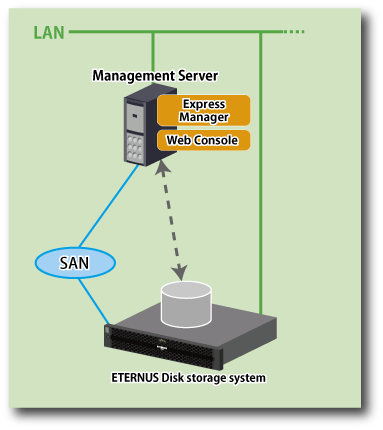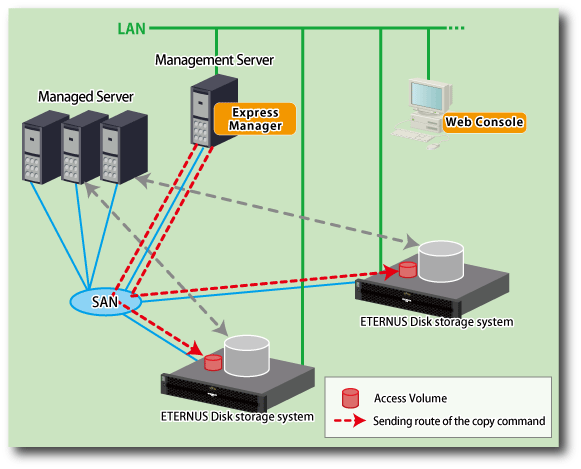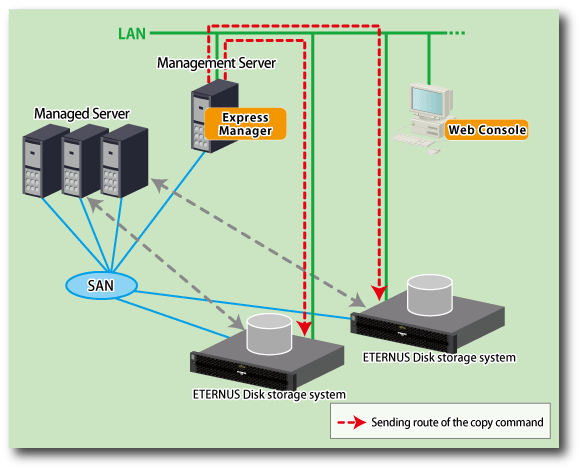Express can manage one or more storage devices.
Express can operate in various system configurations such as the ones described in this section.
Basic system configuration
In this configuration, Express's manager and Web Console are operated on the same server.
Figure 1.2 Example of basic system configuration

The Express's manager and Web Console can be operated on different servers. In this environment, Web Console accesses to the Express's manager over the network (HTTPS connection).
System configuration using the Advanced Copy function
In Express, the Management Server sends a command to ETERNUS Disk storage system to perform an Advanced Copy function. There are two available methods for sending the copy command:
Sending a command to ETERNUS Disk storage system to perform an Advanced Copy function from the server over the SAN (hereafter referred to as "Copy command via SAN")
Sending a command to ETERNUS Disk storage system to perform an Advanced Copy function from the server over the LAN (hereafter referred to as "Copy command via LAN")
The following table describes the requirements for the two copy methods, via SAN or via LAN, for each type of system:
Device name | Copy command via SAN | Copy command via LAN | ||
|---|---|---|---|---|
Operation | Firmware version | Operation | Firmware version | |
ETERNUS DX60/DX60 S2/DX80/DX90 | A | All versions | N/A | - |
ETERNUS DX80 S2/DX90 S2 | A | All versions | A | All versions |
(A=Available, N/A=Not Available)
When using the Copy command via SAN method, a logical volume that can be accessed from the Management Server is needed in ETERNUS Disk storage system. In this manual, this logical volume is called "access volume". One logical volume of ETERNUS Disk storage system must be assigned to Management Server as the access volume.
Figure 1.3 Example of system configuration using Copy command via SAN

When using the Copy command via LAN method, no access volume is needed.
Figure 1.4 Example of system configuration using Copy command via LAN

See
For details about setting up a redundant configuration, refer to "4.4.9 Executing remote copy (HA configuration)".
For details about setting up a disaster recovery configuration, refer to "4.4.10 Executing remote copy (DR configuration)".